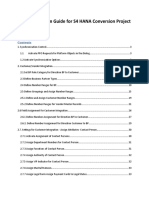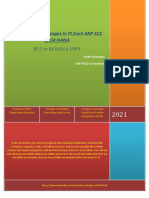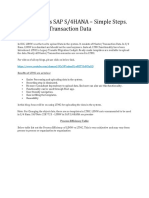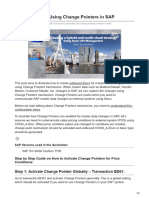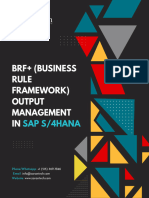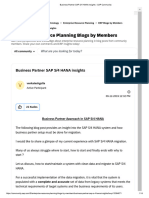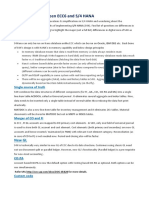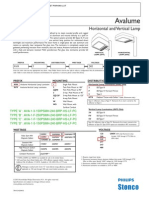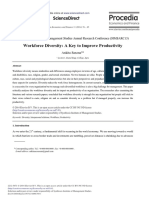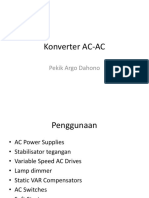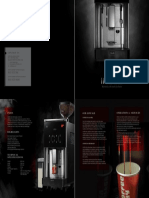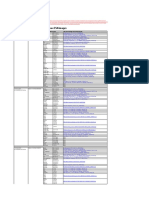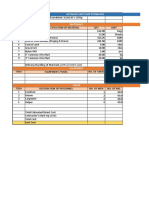100% found this document useful (1 vote)
1K views24 pagesConversion and Migration - BP Configuration Process
This document provides steps to configure Business Partner settings when converting from ECC to SAP S/4HANA. The major steps include:
1. Activating required business functions and objects.
2. Implementing prerequisite SAP Notes to resolve errors related to CVI mapping and checks.
3. Configuring number ranges, roles, field mappings and other settings for business partner, customer, and vendor integration.
4. Running pre-check reports to identify and resolve any issues.
The detailed steps cover areas like activating synchronization options, defining number assignments, assigning attributes for contact persons, industries and more. This ensures proper configuration of business partners during the migration to SAP S/4HANA
Uploaded by
Rahul PawadeCopyright
© © All Rights Reserved
We take content rights seriously. If you suspect this is your content, claim it here.
Available Formats
Download as DOCX, PDF, TXT or read online on Scribd
100% found this document useful (1 vote)
1K views24 pagesConversion and Migration - BP Configuration Process
This document provides steps to configure Business Partner settings when converting from ECC to SAP S/4HANA. The major steps include:
1. Activating required business functions and objects.
2. Implementing prerequisite SAP Notes to resolve errors related to CVI mapping and checks.
3. Configuring number ranges, roles, field mappings and other settings for business partner, customer, and vendor integration.
4. Running pre-check reports to identify and resolve any issues.
The detailed steps cover areas like activating synchronization options, defining number assignments, assigning attributes for contact persons, industries and more. This ensures proper configuration of business partners during the migration to SAP S/4HANA
Uploaded by
Rahul PawadeCopyright
© © All Rights Reserved
We take content rights seriously. If you suspect this is your content, claim it here.
Available Formats
Download as DOCX, PDF, TXT or read online on Scribd
/ 24
